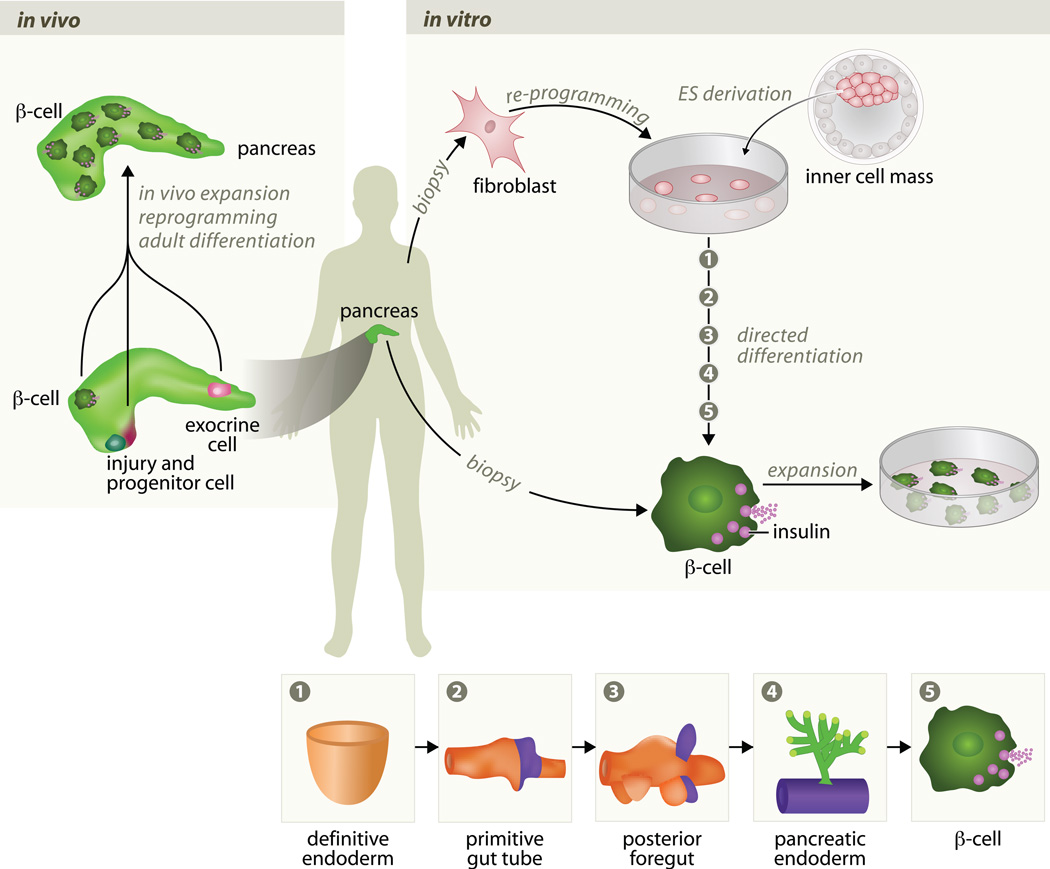Figure 1.
Strategies to generate new β cells A. Existing β cells can be used for in vivo expansion and generation of new β cells. And other cell types in the pancreas, exocrine cells, can be reprogrammed in vivo by defined transcription factors to generate new β cells. Following duct ligation, β cells can be generated from the reactivation of Ngn3+ to form progenitor cells. An in vitro approach is to generate β cells from stem cells, either ES or iPS cells, and use those β cells for transplantation into diabetic patients. A potential single step strategy to achieve this is to find conditions to induce β cell proliferation in vitro with a high enough efficiency. A more complex approach is based on the both patient specific stem cell and recapitulate normal in vitro to generate mature β cells. B. Pancreatic organogenesis in mice (presumed to be similar in humans). During embryonic development, the pancreatic primordium is derived from definitive endoderm (2) that subsequently gives rise to the primitive gut (3) and posterior foregut (4). After induction of pancreatic epithelium (4) the endocrine cells proliferate and aggregate to form the islets of Langerhans that contain insulin-secreting β cells (5). At all stages, the epithelium is surrounded by the layer of mesenchyme that is omitted in this scheme for clarity. The mesenchyme provides essential signals for induction and survival of the epithelium, as well as the blood vessels for transport of glucose and insulin. Each of these steps is represented above, in A, for the in vitro in process of direct differentiation of ES/iPS cell into β cells.

